
Create your own bingo games to play with your class!
- Subject:
- Education
- Material Type:
- Activity/Lab
- Date Added:
- 10/22/2020

Create your own bingo games to play with your class!
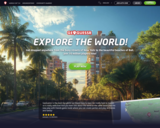
This is a great resource! It is a geography-based game - and a whole lot of fun!
"GeoGuessr is a web-based geographic discovery game designed by Anton Wallén, a Swedish IT consultant, released on 9 May 2013. The game uses a semi-randomized Google Street View location for paying members and Mapillary for non-members. The game requires players to guess their location in the world using only the clues visible." (Wikipedia)
You can play one free game every 24 hours or subscribe to be able to play as much as you want.
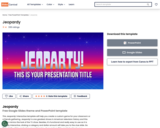
This is a great already pre made with slide transitions and animations if you are making study games, etc! All you need to do is plug in your own questions and content!

Journey 2050 is an online farming simulation that teaches students about food sustainability across the globe. The program challenges students to consider how we will feed an ever-growing population that is projected to reach 10 billion by 2050. Using an inquiry-based approach, this gamified, virtual program encourages students to make decisions and adjust them as they see their impact on society, the environment, and the economy at a local and global scale. Singing up as an educator gives you access to the teacher guides and resources. You can choose how you would like to use this based on the number of hours you are willing to give.

Students groups act as aerospace engineering teams competing to create linear equations to guide space shuttles safely through obstacles generated by a modeling game in level-based rounds. Each round provides a different configuration of the obstacle, which consists of two "gates." The obstacles are presented as asteroids or comets, and the linear equations as inputs into autopilot on board the shuttle. The winning group is the one that first generates the successful equations for all levels. The game is created via the programming software MATLAB, available as a free 30-day trial. The activity helps students make the connection between graphs and the real world. In this activity, they can see the path of a space shuttle modeled by a linear equation, as if they were looking from above.

Win the chance for your class to operate a Lunar Rover in a simulated mission. There will be Canadian rovers on the Moon by the end of this decade. Let’s Talk Science, Canadensys Aerospace, and Avalon Space have teamed up to give Canadian youth in Grades 6-9 the opportunity to learn about rover technology and how to plan missions on the Moon.
The Lunar Rover Research Challenge invites teams of students to pitch their mission plans for the chance to remotely operate a Canadensys rover in a lunar-like environment.
Welcome to the Lunar Rover Research Challenge!
The challenge is for students to design a rover mission to find frozen water at the South Pole of the Moon. The activity is structured as a collaborative board game or digital game where students are guided through the design process. They equip their rover with scientific instruments, choose a target, then determine where to take measurements.
The experience is designed around 5 lessons:
1: Learn about Canada’s role in the upcoming lunar missions and the benefits of space exploration to life on Earth
2: Review the mission brief and learn how to plan a rover mission on the Moon
3: Plan the mission using an iterative design process scaffolded as a collaborative board game
4: Communicate ideas and prepare for submission
5: Reflect on the team’s experience and the impact of space exploration on society
Set in the context of space exploration, this project develops students’ design thinking, teamwork, and communication skills. Students must design their research mission by considering pros and cons, and weighing risks and rewards.
This challenge can be completed without a submission to the competition.

This website is full of many different math games for kids, covering all different areas of math.

Mathopoly - Turning Math into a Game
This presentation from iLearn teaches you how to turn math into the game Monopoly using paid resources from Teachers Pay Teachers.
For the low cost of about $4 you can have Mathopoly spicing up your math classes and giving students the opportunity to personalize their learning!
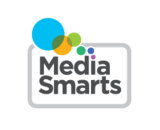
MediaSmarts has designed a new educational card game for grades 9 to 12, #ForYou: A Game About Algorithms, to simulate the different roles that recommendation algorithms play in delivering videos and ads online. The card game is accompanied by a lesson plan (for classroom use) and a discussion guide (for use in a home, workshop or community group). For more details, please visit the MediaSmarts website.Contact: Julia Ladouceur, Project Manager at MediaSmarts, jladouceur@mediasmarts.ca

Learn about basic elements of music using interactive games designed by PBS.
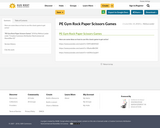
Here are some ideas on how to use this classic game to get active!

A fun way for students to learn the periodic tabel its understand its layout.

Students use the free computer game Pingus to learn how engineers, specifically environmental engineers, use their technical writing skills to give instructions and follow the instructions of others. Students learn to write instructions to express their ideas in clear, organized ways using descriptive, un-ambiguous sentences, as an example of one type of technical writing that important for engineers. The students write instructions enumerating how to beat a game level, which represents surveying that level for environmental problems. As a test of their instructions, students review each others' instructions and offer suggestions for improvement, and then revise their instructions to make them better. Students also see some examples of environmental problems.

Students will learn plant, seed, and flower parts and their functions.
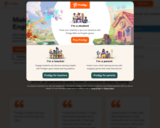
Join over 20 million students, teachers, and parents using our free, curriculum-aligned math game for Grades 1 - 8.
Prodigy is a free, Pokemon-style math game that has been proven to improve student scores and confidence! It is aligned to the Ontario curriculum for grades 1-6, and features content from each of the five major strands.
Prodigy was designed with three primary goals in mind:
1. To create deep engagement so students double their math practice time at home.
2. To equip teachers with reports and assessment tools to inform their instruction.
3. To provide curriculum aligned content for free, regardless of a student’s demographic.
Teachers can create assignments and assessments, align them curriculum, and check in on progress. The program automatically adapts to students who are struggling or excelling, but teacher's also have the option to override grade levels to adapt and modify for individual students. Parents can connect and see what their child is working on, and students can access the program from any computer or tablet.
**NOTE - For FREE summer or at home access, ask your child's teacher to create an account!

Learn to distinguish between different rhythms; includes a listening and reading aspect. Requires Adobe Flash Player.

Students learn how two LEGO MINDSTORMS(TM) NXT intelligent bricks can be programmed so that one can remotely control the other. They learn about the components and functionality in the (provided) controller and receiver programs. When its buttons are pressed, the NXT brick assigned as the remote control device uses the controller program to send Bluetooth® messages. When the NXT taskbot/brick assigned as the receiver receives certain Bluetooth messages, it moves, as specified by the receiver program. Students examine how the programs and devices work in tandem, gaining skills as they play "robot soccer." As the concluding activity in this unit, this activity provides a deeper dimension of understanding programming logic compared to previous activities in this unit and introduces the relatively new and growing concept of wireless communication. A PowerPoint® presentation, pre/post quizzes and a worksheet are provided.

Students learn about five types of renewable energy that are part of engineering solutions to help people in rural communities use less and cleaner energy for cooking and heating. Specifically, students learn about the pollution and health challenges facing families in rural China, and they are introduced to the concept of optimization. Through an energy game, students differentiate between renewable and non-renewable sources of energy.

This choice board offers students and families a menu of options for some fun summer learning. There are some attached documents to support the choice board. Have fun!
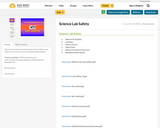
Alberta Ed Lab Safety
Lab Safety
Safety Contract
Safety Game
Safety in the Science Classroom
Spongebob Safety Review